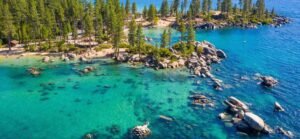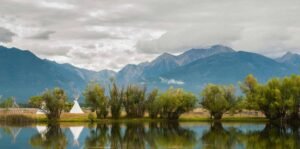
Juneau, Alaska
Juneau is the capital city of Alaska, located in the southeastern part of the state. It is unique among state capitals as it is not accessible by road; you can only reach Juneau by air or sea. Here are some key points about Juneau:
- Capital City: Juneau became the capital of Alaska in 1906, succeeding Sitka. The decision was made to move the capital closer to the state’s population center and to make it more accessible.
- Geography: Nestled in the heart of the Tongass National Forest and surrounded by mountains and water, Juneau boasts stunning natural beauty. The city is situated on the Gastineau Channel, with the towering Mount Juneau and Mount Roberts providing a picturesque backdrop.
- Glaciers: The Juneau Icefield, which spans over 1,500 square miles, is home to several glaciers, including the famous Mendenhall Glacier. Visitors can explore these icy wonders and witness the dynamic landscapes shaped by millennia of glacial activity.
- Outdoor Recreation: Juneau is a haven for outdoor enthusiasts. Hiking trails, fishing opportunities, and wildlife viewing are abundant. The Mendenhall Glacier Visitor Center is a popular destination, providing information about the glacier and its surrounding ecosystem.
- Historical Significance: The city has a rich history tied to the Gold Rush era. The Last Chance Basin, near Juneau, was a site where gold was discovered in 1880, leading to an influx of prospectors. Today, remnants of this history can be explored in places like the Alaska State Museum.
- State Government: As the capital of Alaska, Juneau is home to the state government offices, including the Alaska State Capitol. Visitors can take tours of the Capitol building and learn about the legislative process.
- Cruise Ship Destination: Juneau is a popular stop for cruise ships exploring the Inside Passage. The city welcomes thousands of visitors each year who come to experience its natural wonders and cultural attractions.
- Native Culture: The Tlingit people have a deep-rooted history in the Juneau area. Visitors can learn about their culture, art, and traditions at places like the Walter Soboleff Building, which houses the Sealaska Heritage Institute.
- Juneau Arts and Culture: The city has a vibrant arts scene, with galleries, theaters, and events showcasing local talent. The Juneau Symphony and Perseverance Theatre are notable contributors to the cultural landscape.
- Isolation and Accessibility: Due to its geographical location, Juneau is not connected to the rest of Alaska by road. The only ways to reach the city are by air or sea, adding to its unique charm and sense of isolation.
Overall, Juneau offers a blend of natural beauty, outdoor adventures, cultural richness, and historical significance, making it a captivating destination for residents and visitors alike.




Responses